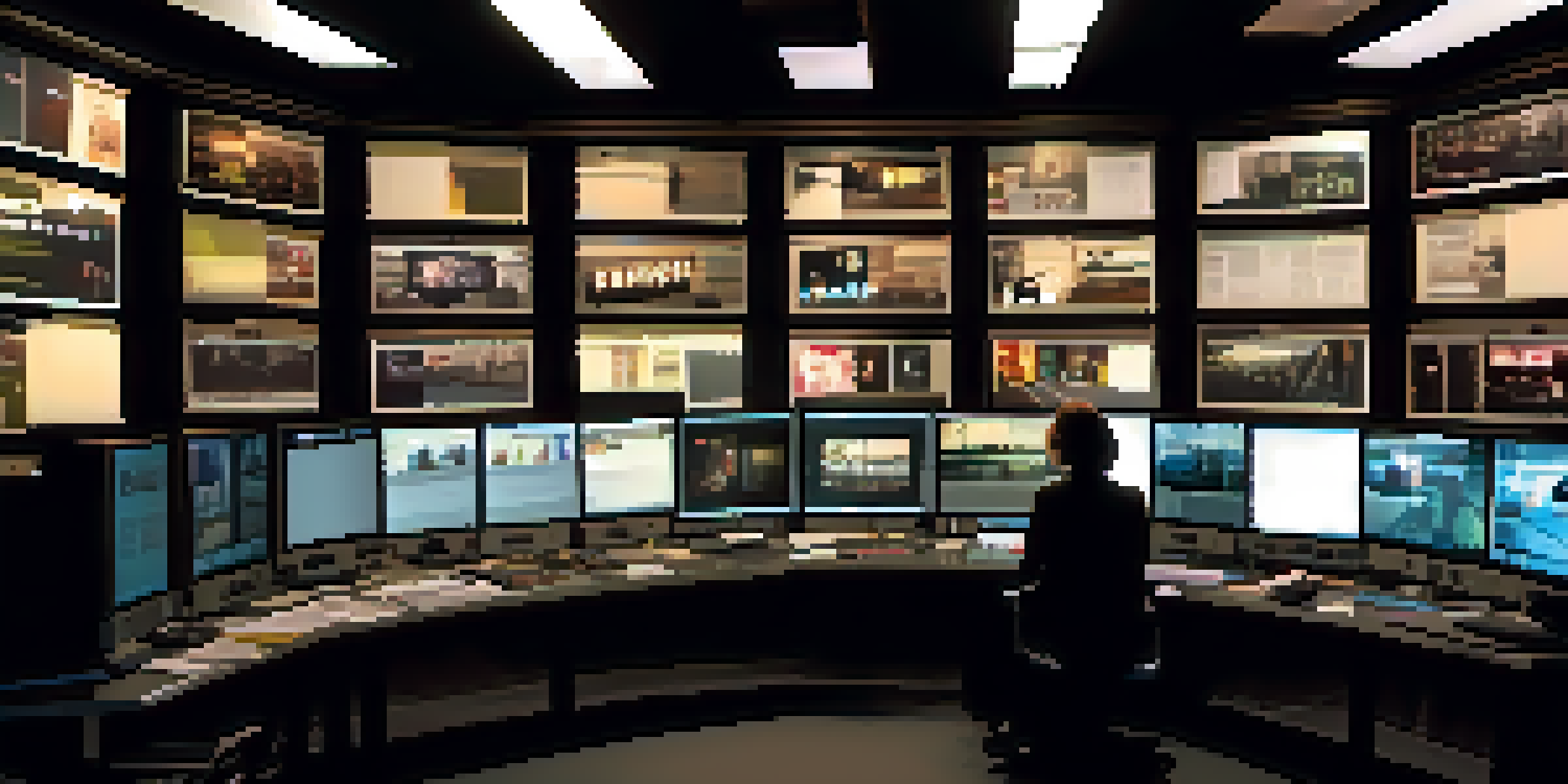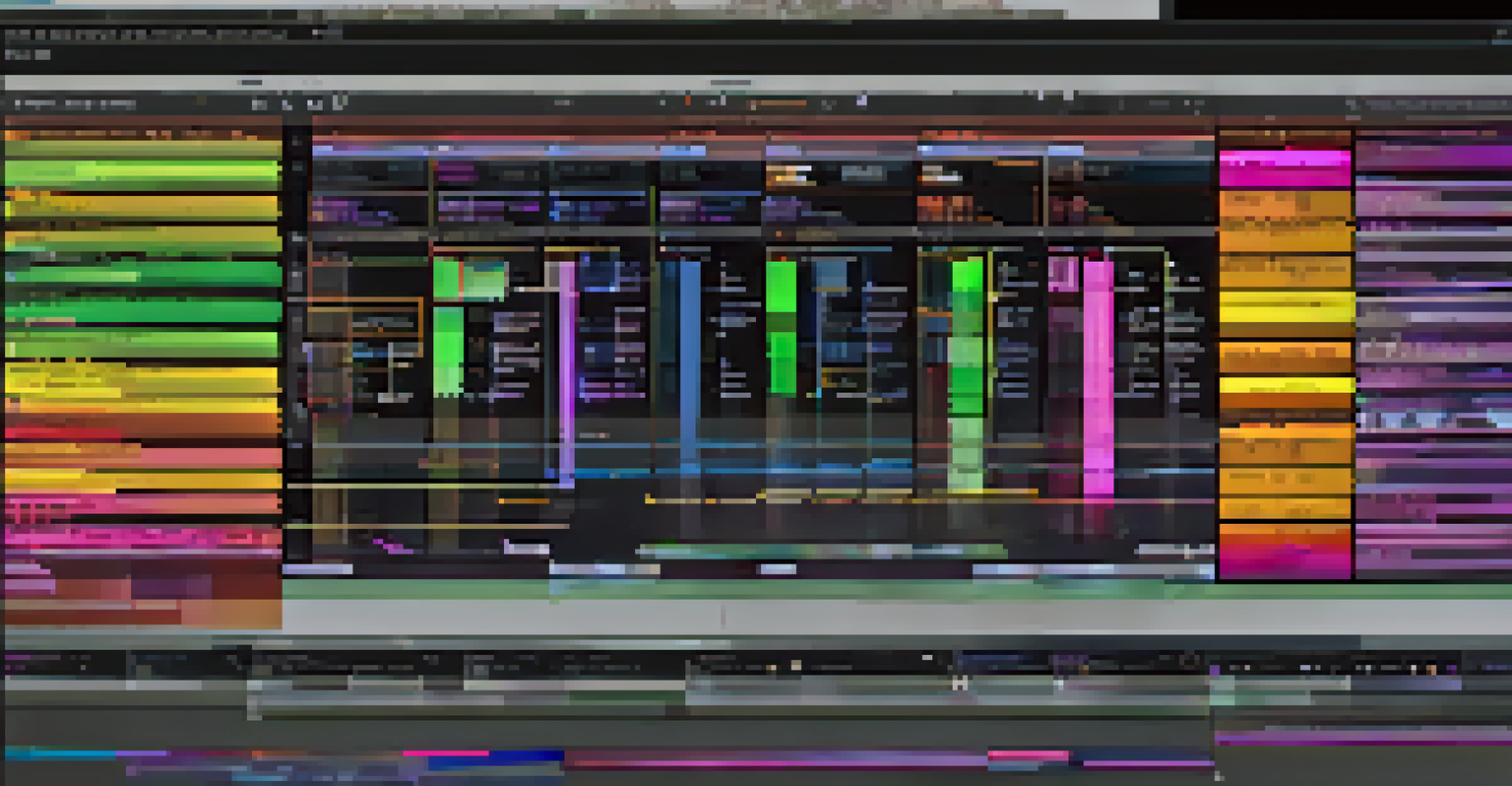The Role of Film Editors in Ensuring Narrative Clarity

Understanding the Film Editor's Role in Storytelling
Film editors are the unseen architects of a movie's narrative. They sift through hours of footage, selecting the best takes to create a coherent and engaging story. This role is crucial because the pacing and flow of a film can significantly impact how the audience perceives the plot.
Editing is not just about making cuts; it's about making connections—between characters, emotions, and the audience.
By assembling scenes in a way that highlights emotional beats and plot twists, editors ensure that viewers remain invested. They are responsible not only for cutting out unnecessary content but also for shaping the story's rhythm and tone. Without their expertise, even the most compelling footage can fall flat.
An editor’s keen eye can transform a good story into a great one. They work closely with directors to realize a shared vision, often guiding decisions that enhance narrative clarity. This collaboration ultimately shapes the film into a captivating experience for the audience.
The Importance of Narrative Clarity in Film
Narrative clarity is vital for audience engagement; it allows viewers to connect with the characters and plot on a deeper level. When a story is clear, it becomes easier for the audience to follow along, making emotional connections with the characters and their journeys. This clarity is essential, especially in complex narratives where multiple threads intertwine.

Without clarity, a film can feel disjointed or confusing, leaving viewers frustrated rather than entertained. A well-edited film guides the audience through twists and turns, ensuring they understand the motivations and stakes involved. This seamless experience is what keeps audiences invested in the story.
Editors Shape Film Narratives
Film editors play a crucial role in constructing a coherent and engaging story by selecting the best takes and crafting emotional rhythms.
Moreover, narrative clarity helps to reinforce the film's themes, allowing the audience to extract meaningful messages from the plot. Editors play a pivotal role in highlighting these themes by carefully selecting which scenes to include and how to transition between them.
Techniques Editors Use to Enhance Clarity
Editors employ various techniques to improve narrative clarity, including cutting for rhythm and using transitions effectively. By adjusting the pacing of scenes, they can create tension, excitement, or calm, depending on what the story requires. This rhythmic editing helps to maintain the audience's attention and emotional investment.
The best editing is the one that feels invisible; it enhances the story without drawing attention to itself.
Additionally, the strategic use of transitions—like fades, wipes, and cuts—can signal shifts in time or perspective, guiding the audience through the narrative. These techniques are subtle yet powerful tools in an editor's arsenal, ensuring that viewers can follow the story without getting lost.
For example, a well-timed cut from one character’s reaction to another’s action can create a sense of urgency and clarity. Such choices can enhance the emotional impact of a scene, making it clearer what the stakes are and how characters relate to one another.
Collaboration Between Editors and Directors
A successful film often results from a strong partnership between editors and directors. Directors provide the vision for the story, while editors bring that vision to life through their technical skills and creativity. This collaboration is essential for ensuring that the narrative remains clear and impactful.
During the editing process, directors and editors engage in discussions about pacing, emotional beats, and the overall arc of the story. Their collaborative efforts can lead to innovative solutions that enhance narrative clarity, like reordering scenes or adjusting dialogue delivery.
Narrative Clarity Engages Audiences
Clear narratives allow viewers to connect with characters and plot, enhancing their emotional investment and overall experience.
Ultimately, this teamwork helps create a unified film, where every cut and transition supports the story being told. When directors and editors are on the same page, the final product resonates more deeply with audiences.
The Emotional Impact of Editing on Viewers
Editing is not just about cutting footage; it's about shaping emotions. A well-edited film can evoke laughter, tears, or suspense, guiding the audience through a rollercoaster of feelings. Editors achieve this by carefully selecting which moments to emphasize and how to structure the narrative.
For instance, a sudden cut to a character's shocked expression can amplify the emotional weight of a revelation. This technique draws viewers in, making them feel as if they are part of the experience. By manipulating time and space, editors create a visceral connection between the audience and the story.
Thus, the emotional impact of editing extends far beyond technical skills; it’s about telling a story that resonates. A clear narrative helps convey these emotions effectively, ensuring the audience leaves with a lasting impression.
Challenges Film Editors Face with Narrative Clarity
Film editors encounter various challenges when striving for narrative clarity. One major hurdle is dealing with excessive footage, often referred to as 'the dailies.' With countless takes available, editors must discern which clips best serve the story, a task that can be both overwhelming and time-consuming.
Additionally, editors must balance the director's vision with the film’s pacing and clarity. Sometimes, a scene that the director loves may not contribute to the overall narrative flow, creating tension during the editing process. Navigating these creative differences requires skill and diplomacy.
Collaboration is Key in Editing
A strong partnership between editors and directors is essential for maintaining narrative clarity and achieving the film's vision.
Moreover, editors must stay attuned to audience expectations and preferences, which can shift over time. What worked in one era may not resonate in another, and understanding these nuances is crucial for maintaining narrative clarity across different genres and styles.
The Future of Film Editing and Narrative Clarity
As technology evolves, so too does the role of film editors in enhancing narrative clarity. The rise of digital editing tools has made it easier to experiment with various techniques and styles, allowing for more innovative storytelling. Editors now have access to features that can streamline their workflow and enhance their creative options.
Moreover, the growing popularity of streaming platforms has changed the landscape for film editing. With audiences consuming content at a rapid pace, editors must adapt their techniques to maintain clarity and engagement in shorter formats, like web series or short films.

Looking ahead, the emphasis on narrative clarity will remain paramount, regardless of technological advancements. As audiences become more discerning, the role of film editors will continue to be vital in crafting stories that resonate and captivate viewers.